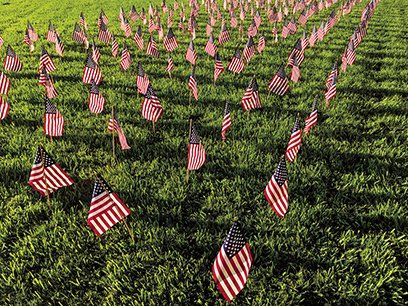Many homeowners relish any opportunity to retreat to their back yards, where they can put up their feet and relax in the great outdoors. That retreat-like escape is made even more relaxing when sitting around a fire pit.
Fire pits can be found in millions of suburban backyards across the globe. Fire pits have become so popular that a 2016 survey of landscape architects conducted by the American Society of Landscape Architects revealed they were the most sought after outdoor design element. Fire pits remain wildly popular a half decade after that survey. Homeowners who are only now joining the fire pit revolution can keep these dos and don’ts in mind as they plan their summer s’mores sessions.
DO keep the fire pit a safe distance away from the home. Fire pits should be located a safe distance from the home at all times, but especially when they’re in use. Home design experts recommend keeping fire pits a minimum of 10 to 20 feet away from a house or other structure, such as a shed or a detached garage. The further away the fire is from houses and other structures, the less likely those structures are to catch on fire.
DON’T place the fire pit beneath trees or next to shrubs. Though fire pits should be kept safe distances away from a house and other structures, it’s important that they’re not placed beneath trees or next to shrubs. Shrubs and low hanging branches can easily catch embers and be lit ablaze, so make sure fire pits are not placed in locations that increase that risk.
DO clean out seasonal debris. It can be tempting to let seasonal debris resting inside the fire pit burn away during the season’s first s’mores session. But burning debris poses a serious safety risk, as embers can easily be blown out of the fire pit and catch nearby trees or shrubs or even a home on fire. The National Fire Protection Association advises homeowners that embers blowing from a backyard fire pose the same threat to homes as if they are from a wildfire.
DON’T let fire pits burn near flammable materials. Store firewood piles a safe distance away from the fire pit while it’s in operation. It may be convenient to keep firewood right next to the fire pit while the fire is burning, but that increases the risk that embers will land on firewood and start a fire outside of the pit.
DO check the weather report prior to starting the fire. Windy weather increases the risk of embers blowing around and potentially landing on the house, other structures around the property or trees. If the weather report is calling for gusting winds, burn a fire on another night.
DON’T leave a fire pit fire burning. Unattended recreational fires are illegal and incredibly dangerous. Homeowners should never leave fire pit fires burning unattended or allow fires to slowly die out overnight. Always extinguish the fire before going inside and stop adding wood to the fire roughly one hour before you plan to go inside. Water or sand can be poured on ashes to extinguish the fire. Once homeowners are confident a fire has been extinguished, ashes can be spread around to ensure there are no hot spots still burning. If there are, start the extinguishing process over again.
A night around the fire pit is a summertime tradition in many households. Safety must be as much a part of such traditions as s’mores.
The post The Dos And Don’ts Of Fire Pits appeared first on Living Local 24/7.


